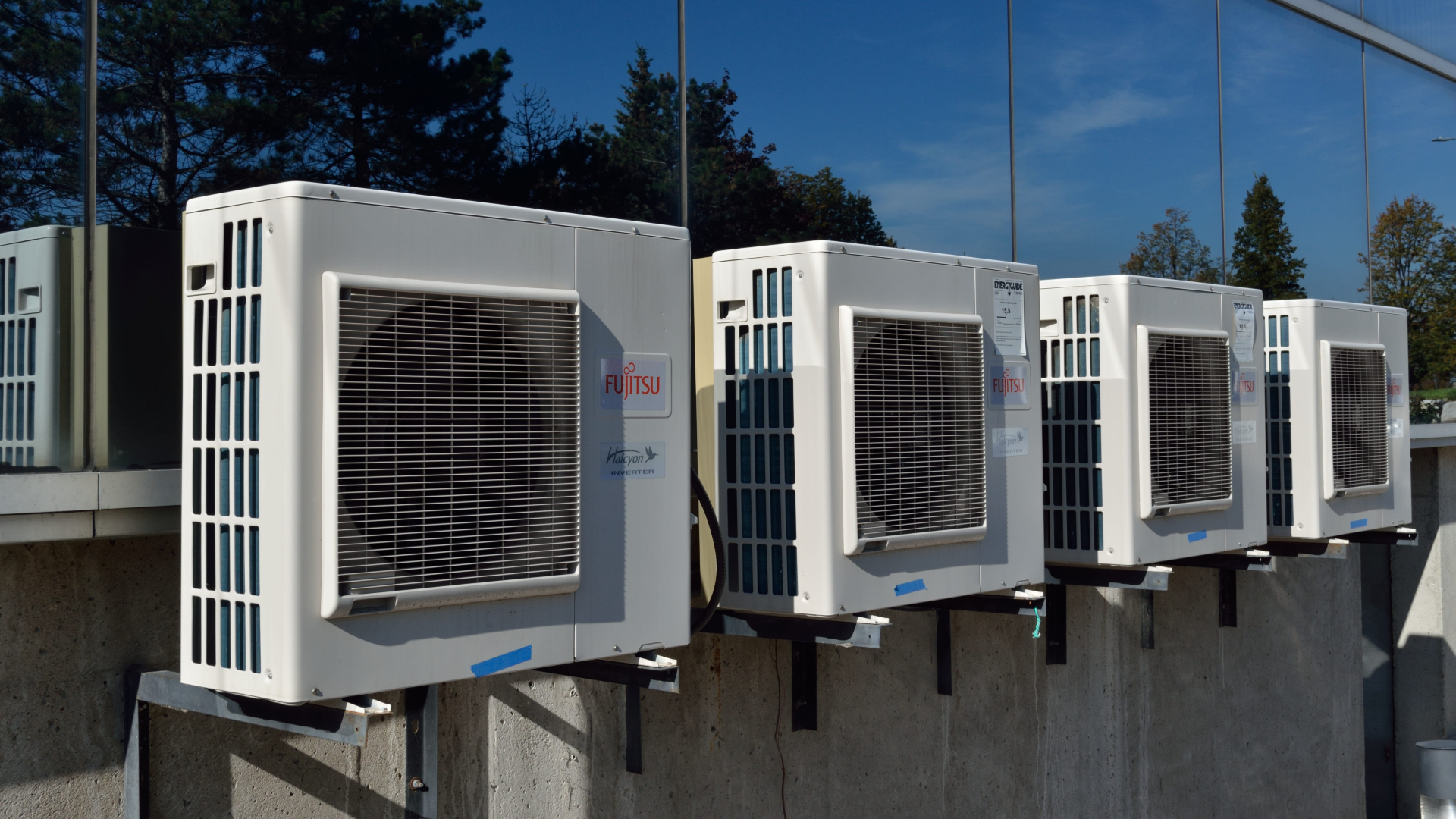Understanding Variable Refrigerant Flow (VRF) Systems: Are They the Future of HVAC?
ramaker insights
Understanding Variable Refrigerant Flow (VRF) Systems: Are They the Future of HVAC?
In recent years, Variable Refrigerant Flow (VRF) systems have gained popularity and are now widely used in commercial and residential buildings worldwide. In fact, according to a report by MarketsandMarkets, the global VRF system market is expected to reach $31.9 billion by 2025.
VRF is an air-conditioning solution that saves energy and controls temperature and humidity like a pro. Here’s how it works: refrigerant circulates through individual indoor units, which means you can control the temperature in every room or zone. No more one-size-fits-all approach with a centralized unit. VRF systems are also versatile – they can both heat and cool, making them perfect for varying climates and applications.

VRF systems are an alternative to traditional HVAC systems like the one shown above.
What are the types of VRF Systems?
Let’s dive into the two main types of VRF systems:
Heat Recovery VRF Systems: These systems provide both heating and cooling capabilities to multiple zones within a building. They use a heat exchanger to recover waste heat from the cooling process and reuse it to supply heating to other zones. This not only makes the heat recovery VRF system highly energy-efficient, it’s also cost-effective.
Heat Pump VRF Systems: These systems are designed to supply heating in cold climates and cooling in warm ones. They work by extracting heat from the outside air in winter and pushing it outside in summer. Heat pump VRF systems are ideal for use in areas with moderate climate conditions and moderate heating and cooling loads.
It’s also worth noting that VRF systems can be classified based on their application, such as residential, commercial, or industrial. Some VRF systems are even designed for specific applications, such as those for hotels, hospitals, and schools, to meet the unique needs of each type of building.
When should VRF systems be used?
If you’re looking for an HVAC system that provides you with a high degree of control and flexibility while being energy efficient and quiet, then VRF systems are a great option. They’re commonly used in places such as office buildings, hotels, schools and universities, hospitals, and residential buildings. However, it is important to note that VRF systems may not be the best option for buildings with large cooling loads or limited space for indoor units. In such cases, alternative HVAC systems may be more suitable.
How much do VRF systems cost?
When it comes to the cost of VRF systems, there are several factors to consider such as the size and type of building, climate, desired comfort level, installation, and maintenance costs. Although VRF systems are generally pricier than traditional air-conditioning systems, they offer higher energy efficiency and greater flexibility. While the initial cost of a VRF system may be comparable to other zoned HVAC systems, such as ductless mini-split or geothermal systems, VRF systems can provide greater long-term cost savings due to their energy efficiency and lower maintenance costs.
It’s important to consider the total cost of ownership when deciding on an HVAC system, including installation, maintenance, replacement, and energy costs. With proper maintenance, a VRF system can provide a comfortable and energy-efficient environment for up to 20 years, making it a smart and cost-effective choice for many buildings.
The Future of VRF Systems
The future of VRF systems is looking up, with new technological advancements and a growing demand for energy-efficient and adaptable heating and cooling solutions. VRF systems can make a significant contribution to helping building owners and operators meet energy codes and regulations, which aim to promote energy efficiency and reduce greenhouse gas emissions.
By opting for a VRF system, building owners and operators can not only enhance the energy efficiency and indoor environmental quality of their buildings, but also actively promote sustainability and reduce their environmental impact.
Interested in connecting with our Mechanical Engineers to discuss whether a VRF System is the right fit for your project? Contact Ramaker today!
About the Author: Kurt Rederer is a highly experienced Mechanical HVAC Engineer with over 20 years of experience in the field. He obtained his bachelor’s degree in mechanical engineering from the University of Illinois at Chicago (UIC) and has since then worked on a variety of projects domestically and abroad, ranging from residential/commercial and industrial HVAC systems to government and military applications.
Throughout his career, Kurt has developed a deep understanding of the principles and best practices of Mechanical HVAC Engineering and has applied this knowledge to design and oversee the installation and maintenance of HVAC systems in a wide range of settings. He has a keen eye for detail and is passionate about finding innovative solutions to complex engineering challenges.
In addition to his technical expertise, Kurt is a strong communicator and collaborator, with a proven ability to work effectively with clients, contractors, and other stakeholders to deliver successful projects on time and within budget. He takes pride in his work and is committed to ensuring that each project he works on meets the highest standards of quality and reliability.



